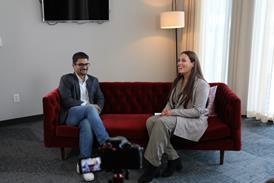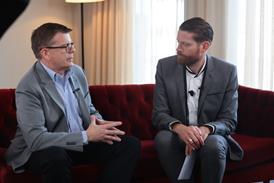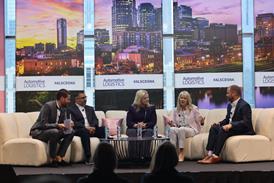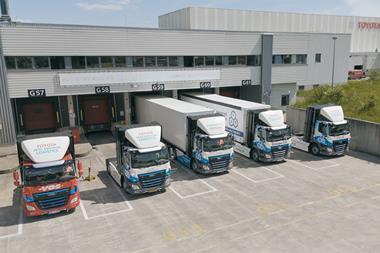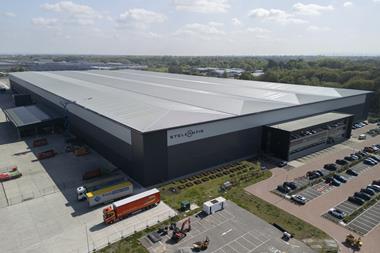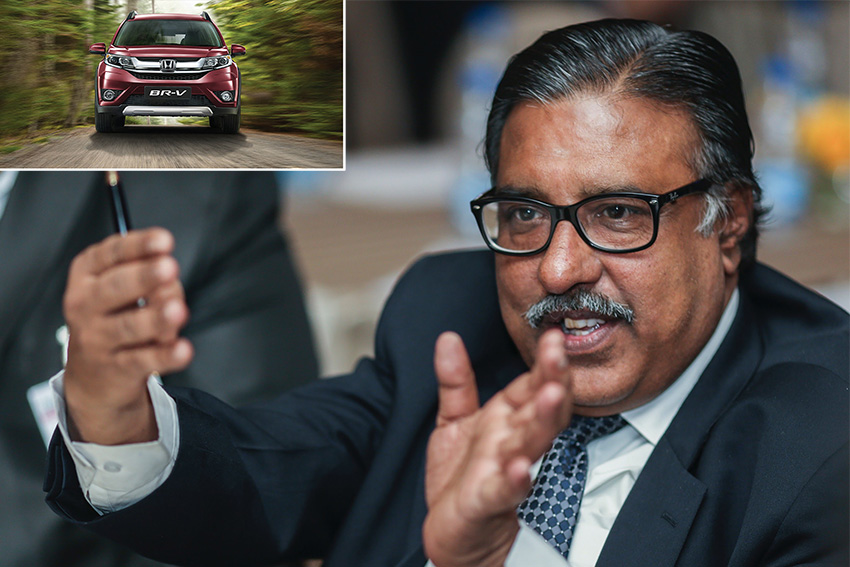 Honda Cars India’s head of supply chain management, PR Ramakrishnan (pictured), outlines his approach to meeting higher customer expectations in a changing regulatory landscape
Honda Cars India’s head of supply chain management, PR Ramakrishnan (pictured), outlines his approach to meeting higher customer expectations in a changing regulatory landscape
Honda Cars India, like the country in general, has its eyes on growth, as it expands its plants, model line-up and dealer network. Also like India more broadly, Honda wants to reform and modernise its operations in the face of changing customer expectations as well as regulations.
In this story...
Honda, which sells around 200,000 cars per year in India across a network of 300 dealers in 20 states, is investing heavily in the country. Capacity will increase at its two plants – at Greater Noida and Tapukara, both close to New Delhi – from 240,000 to 300,000 units. Currently, 95-98% of its output in India is for the domestic market, although exports could grow in future.
The carmaker is aiming to keep up with India’s light vehicle market, which is expected to pick up following several years of stagnation. Sales of around 3.3m were expected in 2016 (from 3.1m in 2015), according to analyst firm IHS Markit, and a rise close to double-digit rates is predicted thereafter. In fact, India could become the world’s third largest vehicle market during the next decade.
The Indian market has also been growing in terms of value and quality expectations, including a sharp rise in the small SUV segment in recent years – something Honda is hoping to capture more of, including with the launch of the BR-V, built in Tapukara, in 2016.
According to PR Ramakrishnan, general manager of supply chain management at Honda Cars India, the brand’s customer base is expecting more in terms of delivery quality, including nothing less than “factory fresh” vehicles delivered without damage and in good time. Achieving this level of service will rely on efficient and quality-driven vehicle logistics.
“Delivery is the key to success and meeting customer demand in a changing market scenario will be a key aspect of enhancing the pace of change in India,” says Ramakrishnan.
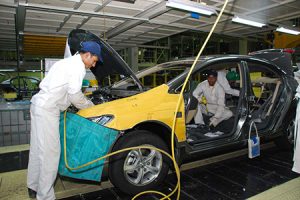
[sta_anchor id="1"]However, Honda, like other carmakers in India, faces challenges in meeting its customers’ wishes across the country’s long, complex supply chain. Last year it spent upwards of 12,000-18,000 rupees ($175-$220) per car on outbound logistics, with an average delivery distance of 1,200km. Cost is not necessarily the main issue though. Ramakrishnan says it takes between two and three weeks from ordering a Honda to it being delivered, but customers are increasingly less patient with that timescale, especially when they have to wait beyond the average time.
Infrastructure and taxWhile Ramakrishnan appreciates that Indian logistics has improved – the country jumped almost 20 places to 35th in the World Bank’s Logistics Performance Index between 2014 and 2016 – two fundamental problems continue to hamper the delivery of vehicles in India today: infrastructure and tax complexity.
The development of national motorways across India has been significant, however Ramakrishnan says Honda is still affected by traffic and poor rural roads.
“The road infrastructure has developed very much, but in spite of that, a consignment to Chennai will probably take about eight days [from our plants near Delhi],” he says. “In spite of making four-lane highways, the [delivery] time is similar. We don’t expect any improvement. So where can we get the efficiencies?”
Despite investment, state and national motorways only account for a combined 5% of the total road network in India but carry 65% of freight traffic, according to the latest figures from Ministry of Road Transport and Highways. Underdeveloped district and rural roads make up the rest of the network.
India’s transport network is further slowed by a range of tolls, state border points and ‘octroi points’ where local taxes are collected on products brought into states for consumption. There is also plenty of corruption, including officials seeking bribes around border and octroi points.
The good news is that India is addressing these issues. Its ‘surgical strike’ in November, in which it suddenly withdrew larger currency notes, was aimed in part at those in the underground economy as well as the culture of bribes (while the currency change appears to be having negative economic consequences, a short-term benefit for logistics was the suspension of toll collection for several months).
 "Delivery is the key to success and meeting customer demand in a changing market scenario will be a key aspect of enhancing the pace of change in India" - PR Ramakrishnan, Honda Cars India
"Delivery is the key to success and meeting customer demand in a changing market scenario will be a key aspect of enhancing the pace of change in India" - PR Ramakrishnan, Honda Cars India
India is also attempting to improve distribution within the country by switching from a value-added tax (VAT) system across states to a central Goods and Services Tax (GST) system, which is scheduled for introduction in April 2017.
GST will be an indirect tax imposed on all goods and services either produced in or imported into India. It is designed to streamline tax administration by eliminating varied, higher and multiple state-to-state taxes, including levies and double taxation.
For the automotive sector, GST means the price of a particular model will be uniform across all states. It will also mean that parts and vehicles can be centrally stored and distributed across state lines without paying duties or levies.
“The change from VAT to GST, which is a consumption-based tax, will make a big difference,” says Ramakrishnan. “It will revolutionise the distribution strategy. We need to decide what sort of supply chain we would like to see under GST.”
[sta_anchor id="2"]Such a distribution setup is expected to make rail transport a more feasible option in India, for example, thanks to the use of hub-and-spoke distribution methods. So, rather than keeping vehicles scattered across small stockyards in each state, OEMs could consolidate more vehicles in one place, then move full truckloads or trainloads to other states without paying tax and duty, as well as avoiding delays at borders and octroi points.
Making the most of the modesEven before GST and a hub-and-spoke model can cause that ‘revolution’, Ramakrishnan is moving Honda towards more multimodal transport in India. The OEM already moves 12% of its volume by rail – much higher than the industry average of 3-5%. Its current rail transport is to Chennai for local deliveries and also exports; Ramakrishnan says the company is now evaluating Mumbai as its next option for rail deliveries.
Honda is using APL Logistics Vascor, a joint venture that is one of just two licensed users of specialised rail wagons in India (the other is Maruti Suzuki). APL Vascor is responsible for the complete movement of the cars from Honda plants to the dealerships, including rail and last mile moves.
Rail has seen an improved performance rating that could be attributed to good connectivity across the length and breadth of the country. It remains, however, a nascent mode for automotive, though studies by Indian Railways indicate that as much as 25% of automotive traffic could eventually move by rail.
The cost of moving vehicles by rail in India is generally considered high compared with more developed countries, in part because Indian Railways subsidises passenger tariffs at the expense of freight. Added to that is the fact that the infrastructure needs investment, something that the government is addressing with dedicated freight corridors.
However, says Ramakrishnan, building such corridors is not as important as reducing empty miles on return flows. “I have to pay more if I have an empty return haul,” he says. “But [APL Logistics Vascor] is working on the return cargo factor and should be able to find a solution on the backhaul.”
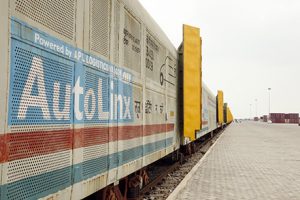 Honda is using APL Logistics Vascor for the movement of cars from its plants to its dealerships, including rail and last mile moves
Honda is using APL Logistics Vascor for the movement of cars from its plants to its dealerships, including rail and last mile movesHonda is also looking at short-sea coastal routes, a method that is in its infancy in India. Using coastal shipping has generally been a problem in the country in part because of prohibitive port charges and restrictions, but in September last year the Ministry of Shipping announced that major ports would be introducing a discount of 80% for two years on vessel-related charges for coastal vehicle movements.
In September, a vessel made a voyage to Ennore, close to Chennai, and Cochin on its way to Kandla, connecting production hubs in Tamil Nadu on the east coast and Gujarat and Haryana in the west. The shipment of more than 1,600 vehicles reportedly comprised mainly Hyundai vehicles alongside units from Renault Nissan, Ford and Toyota.
Although Honda’s plants in India are relatively far from the coasts, Ramakrishnan wants to explore the potential of coastal shipping. “We are very much involved with rail and also evaluating the use of ro-ro vessels. This is because we feel that, as an organisation, the development of any alternative modes helps in the reduction of CO2 and brings benefit to society.
“Within the next three years we should be moving 25% of our volumes on these alternative modes and we want to expand our footprint through rail to the west and east.”
[sta_anchor id="3"]While still in need of development, these alternative modes offer potential economies of scale in transport, and also more environmentally friendly options – a growing concern in a country where the main industrial zones can be choked with dangerous levels of smog (as was seen in November when New Delhi became the most polluted place on the planet). Ramakrishnan estimates that Honda’s use of rail transport has reduced CO2 emissions per transported car by 240 kilogrammes.
Sweating the assetsAnother impending regulatory change that will impact vehicle logistics in India is the introduction in 2017 of new rules to standardise and legally enforce a maximum car carrier trailer length of 18.75 metres, while also mandating improved safety features, such as rear cameras.
 "[On rail] I have to pay more if I have an empty return haul. But [APL Logistics Vascor] is working on the return cargo factor and should be able to find a solution on the backhaul." - PR Ramakrishnan, Honda Cars India
"[On rail] I have to pay more if I have an empty return haul. But [APL Logistics Vascor] is working on the return cargo factor and should be able to find a solution on the backhaul." - PR Ramakrishnan, Honda Cars India
Given that trailers currently range anywhere up to 22 metres, perhaps 20-25% of current capacity will be lost, according to Ramakrishnan. However, he points out that carmakers only use around 70% of existing car carrier capacity and more efficient use could be made of the equipment.
“Asset utilisation is a very important factor in the whole process and [so is a] focus on improvement of skill level and the development of a dedicated programme for logistics professionals,” he says.
It is not surprising that Honda is eager to make savings rather than increase logistics expenditure, especially in the hyper-sensitive Indian market, in which passing on costs to customers can be a significant competitive disadvantage.
However, Ramakrishnan understands that Honda depends upon strong, reliable carriers being able and willing to invest in the quality of their operations. As such, he sees the potential for longer-term contracts with third and fourth party logistics providers, shifting the focus away from purely transactional costs.
“Many times, what happens is that when we have a short-term agreement with a service provider, their level of investment is probably reduced, because they are looking at what return they will get in the short term,” he admits.
With longer-term contracts, logistics providers would have more confidence to invest in the technology essential to building a more efficient service, something of a priority for Honda. For example, he sees considerable scope for improving IT systems for logistics in India.
“Technology is very important and we would not be able to achieve our efficiencies without it,” says Ramakrishnan. “India is one of the major countries where IT has developed well and we are supporting it all over the world.”
That includes a better use of data to bring savings – something Honda does a lot of itself in-house.
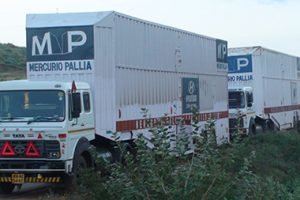 While maximum transporter length is being reduced, carmakers only use around 70% of existing car carrier capacity and more efficient use could be made of them
While maximum transporter length is being reduced, carmakers only use around 70% of existing car carrier capacity and more efficient use could be made of them[sta_anchor id="4"]“A lot of things are coming from our own systems,” says Ramakrishnan, who points to stock validation in vehicle yards and GPS tracking of trailers, as well as delivery confirmation to dealers. “We do analysis and communication with our vendors on a monthly basis about performance. We have to resolve delayed delivery issues and use data systems to do it.”
Putting the customer firstAs well as using technology, better asset utilisation and multimodal transport to improve costs and efficiency in India, Ramakrishnan wants to get products to the company’s customers faster. To that end, he is bullish on a hub-and-spoke distribution model to make better use of logistics capacity and shorten lead times.
For example, there would normally be a gap in the demand and supply of vehicles given the average two-to-three weeks it takes between an order and delivery. Having a stock of vehicles at a hub closer to the dealer means that time can be dramatically reduced. It can also be useful as a means of supplying marginal sales regions.
“We are able to use the logistics capacity, we are able to ship the car and there are some markets where the demand of a customer is very small in size,” says Ramakrishnan. “So, from a hub the delivery becomes a little easier. Yes, there is a cost to it but it is down to OEMs’ estimation of whether they want to go for this model or not, depending on their overall plans.”
It will be up to the ingenuity of logistics providers to make this work from a cost perspective as well as an operational one, adds Ramakrishnan, but for him, Honda’s strategy will be clear.
“My point is very simple. Every company has their own distribution strategy and they should use what is best suited to them. Currently we find, at least where we have started using the hub, that it is working well. So we will use it.”





